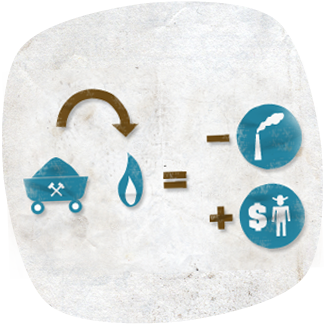The goal
Our Graneros factory, producing soluble coffee and infant cereal since 1936, was using more than eleven thousand tonnes of coal a year to produce heat and steam and to run the machinery. This was simply too much. An alternate energy source needed to be found in order to move towards responsible production.

The future
More factories in Chile are encouraged to apply for carbon credits for switching from fossil fuels to natural gas since the success of this sustainability project. Already one third of the factories in Latin America are using natural gas. With continuing improvement in availability of natural gas, we hope to see this figure increase further.
BACK

Our contribution
In 2003, NESTLÉ decided to switch to natural gas in order to significantly reduce greenhouse gases, including carbon dioxide, methane and nitrous oxide. In fact, when the United Nations validated the project in July 2005, the reductions in carbon dioxide emissions were calculated as being close to 20,000 tonnes per year.
Because Nestlé had been so successful in reducing its carbon dioxide emissions in its quest for environmental sustainability, it was able to sell its carbon credits to the Japanese Electric Power Development Company within the framework of the Kyoto Protocol.
Hugo Lavados, the Chilean Minister for Economy and former Director of ProChile, has said of the sustainability project: “NESTLÉ was the first industrial-sector company to make use of this tool in Chile, which undoubtedly has become an incentive and example for other companies from various other sectors in adopting cleaner technologies. It also enabled our country to join the carbon trading market, with a new, but very promising, non-traditional export product.”
